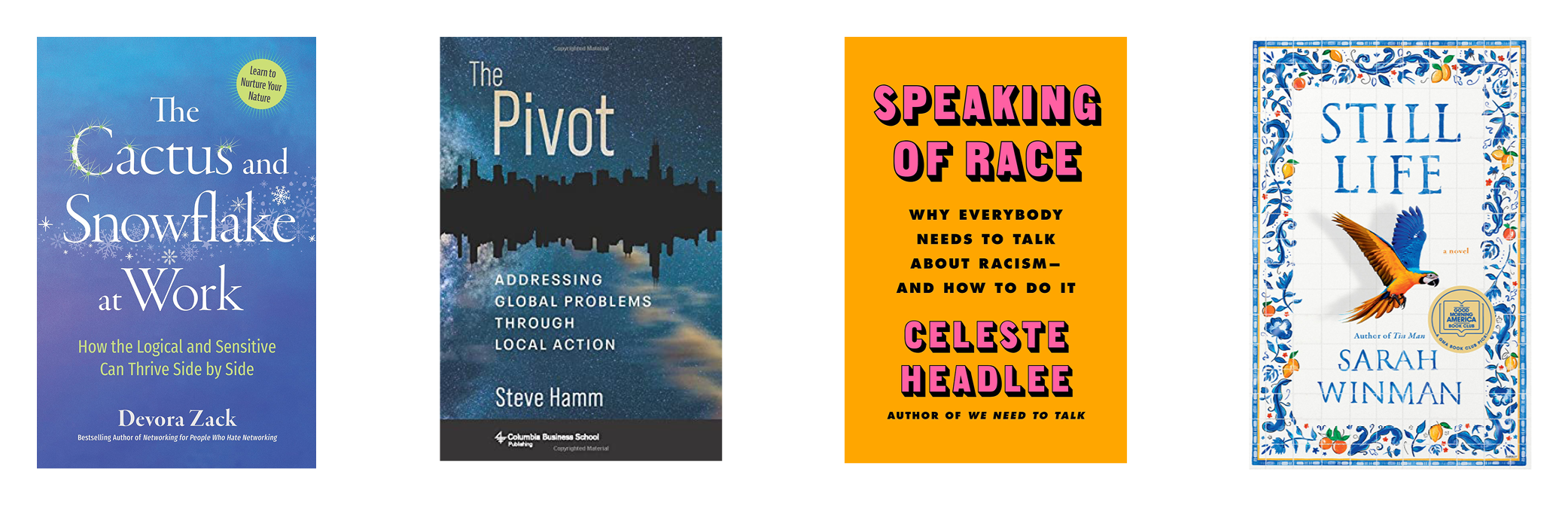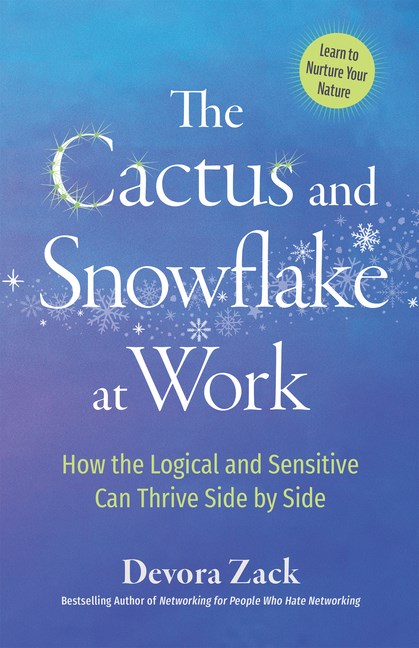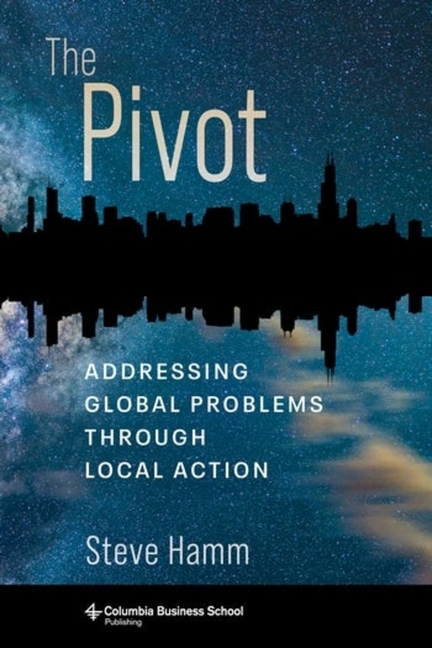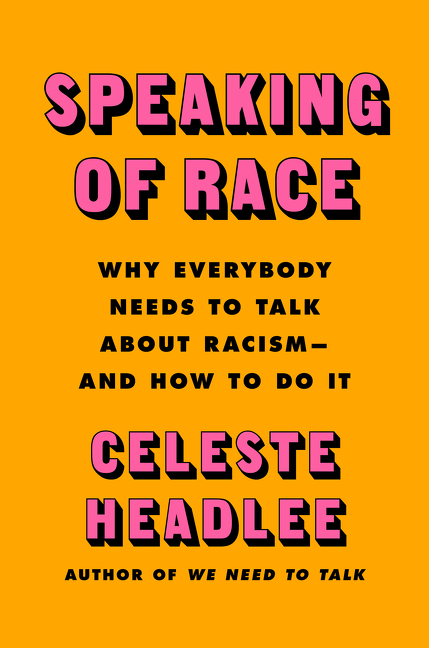Books to Watch | November 2, 2021
November 02, 2021
Each and every week, our marketing team—Dylan Schleicher (DJJS), Gabbi Cisneros (GMC), and now Emily Porter (EPP)—highlights a few new books we are most excited about.
This week, our choices are:

The Cactus and Snowflake at Work: How the Logical and Sensitive Can Thrive Side by Side by Devora Zack, Berrett-Koehler
While it's easy to divide a population of employees, friends, siblings, or community members between introverts and extroverts, that would be unfair not only to others but to ourselves. By acknowledging that our personality styles are unique to each individual, we can be more accepting of ourselves AND benefit more fully from books like Devora Zack's latest, The Cactus and Snowflake at Work.
What stick out to me most about this book are Zack's humorous asides and overall informal tone. Content that investigates human behavior could easily be conveyed more analytically, but the fact that Zack infuses logical writing with playful humor helps her communicate with both people who process life as thinkers or as feelers–Or as she calls them, Cacti and Snowflakes, both of which are "positive metaphors for contrasting predilections." I like that this book attempts to redefine our internalized understanding of "snowflake" as an insult. Instead of seeing one way of processing the world as wrong and the other as right, Zack helps us understand how each element of our interactions is important to reaching Cacti and Snowflakes. Words, for example:
If you want your words to reach and inspire others, you may want to practice translating from Snowflake lingo to Cactus dialect and back again ... Those who highly identify as Cacti even more strongly favor versions of the word ‘think,’ whereas strongly identified Snowflakes more readily default to variations of ‘feel.’
The author's voice shines through in the quirky metaphors and comments that she makes. Her lighthearted disposition paired with interactive content—quizzes, follow-along exercises, and thought-provoking case study stories—makes the content feel fresh and easy to apply to your own life.
Neither sensitivity nor snowflakes themselves should be labeled as lesser than, and through The Cactus and Snowflake at Work, we can see and learn how to use the strengths from both personality types. (GMC)
The Pivot: Addressing Global Problems Through Local Action by Steve Hamm, Columbia Business School Publishing
In 2020, Steve Hamm joined a nascent group of individuals that would come to be known as Pivot Projects. It started out centered on how technologies and concepts the core leadership group of engineers had worked with could be brought to bear on the problem of climate change, but their work was joined by a dedicated, diverse, and multidisciplinary set of volunteers that pushed the project in some unexpected and exhilarating directions, including workstreams on spiritual life and beliefs, arts and culture, and education. It is all still a work in progress, but the book Hamm has produced of the experience is informative and unique. As he explains it:
Unlike the typical business book, this one doesn’t lay out a series of bullet-point prescriptions about how to make an organization, an industry, or the world work better. Neither does the Pivot Projects. Both the book and the group are about learning, engaging, and working with others to get something done. In stable times, it’s easier to make plans and then execute them. In times of chaos and uncertainty, solutions to problems have to emerge from engagement and experimentation.
You are certain to learn something new about the big ideas the group's leaders began the project thinking about—sustainable building practices and city planning, systems thinking, complexity theory, artificial intelligence, resilience—and the way the group works remotely and collaborates virtually, but the project’s purpose is so existential in nature that the overall examination it offers of our society goes much deeper. The most powerful part of the book is not in its explanation of this or that technology or concept, but in the exploration of the human connections that have been made on the project, the profiles of individual people and a collected community committed not only to a cause, but to each other. It serves as a great example of what the world can look like if we ever learn to work together, across boundaries and differences and at a distance, to make the world better for all of us living today and for the future. (DJJS)
Speaking of Race: Why Everybody Needs to Talk About Racism—and How to Do It by Celeste Headlee, Harper Wave
The outrage over critical race theory we’ve recently witnessed in school board meetings across the country is deeply unsettling, and not connected to anything I understand as reality—unless the reality is that there is a big market for manufactured outrage out there. But maybe I shouldn’t be too surprised, or despondent, about it. The very idea of race may not have a biological or scientific leg to stand on, but racism is very much a social reality, baked into our everyday interactions and lives, and the political landscape, and we have to talk about it.
I read and reviewed Celeste Headlee’s two previous books, We Need to Talk and Do Nothing, so I was excited when I saw she had a new one coming out, and thankful for the topic she has taken on. As a light-skinned, Black Jewish female, she has had to contend with people not being able to easily place her in their racial constructs for her entire life. Because of that, she has had more conversations about, and personal insight into, those constructs than most others. And what she knows from that and her extensive reading on the topic is:
No one is free from the stain of racism; we are all subject to the systemic discrimination that’s embedded in our governments and schools and workplaces. … We must talk to one another if we are to have any prayer of ending this hatred. We can’t change anything without naming it, without acknowledging it. It is not too dangerous to talk about race; it is too dangerous to remain quiet on the subject.
Screaming down your local school board about something that is not actually a part of the curriculum may not be the best way to do it, but just as gay marriage was once used as a wedge issue to galvanize people opposed to it, perhaps just the fact that people are talking about it may provide an opening to changing the conversation. The furor at school board meetings may be a backlash to the Black Lives Matter movement and calls for social justice, but if we can take that back and forth playing out on the airwaves, in our streets, and now in our schools, and bring it into our everyday lives and engage heart to heart with those we don’t see eye to eye with instead of writing them off as a lost cause, then maybe we have a chance at making change. Supporting legislators and legislation we agree with is always important, but we must also keep talking in good faith with those we disagree with. It will most likely be awkward and uncomfortable, at best, but as Headlee writes “We can do this, one conversation at a time.” (DJJS)
Still Life: A Novel by Sarah Winman, Crown
When I read Sarah Winman’s first novel, Tin Man, (you can read the Tin Man review here) I was beside myself at how beautiful and moving her writing and the story were, so as soon as I saw Still Life pop up, I knew it had to be added to my reading queue. This new title does not fail to impress. Set mostly in Italy during the second World War, we follow several characters, Ulysses, Evelyn, Peg, and many other colorful personalities we first meet within a hole in the wall pub in London, The Stoat and Parrot, Ulysses works for after returning from the war.
During his time in the war, Ulysses meets the eccentric Evelyn, an art historian, who came to the battlegrounds around Tuscany to save works of art. Here she speaks about why art is so important to protect during times of war:
Our turmoil is revealed in those painted faces—sometimes tenderly, sometimes grotesquely, but art becomes a mirror. All the symbolism and the paradox, ours to interpret. That’s how it becomes part of us. And as counterpoint to our suffering, we have beauty.
She leaves an impression on the young Ulysses that stays with him for a lifetime. After an unanticipated inheritance of a large sum of money, Ulysses decides to go back to the hills of Tuscany where so many memories reside for him, where it all began.
This book, like Tin Man, is wrapped around the complications, the delicacies, the pure raw emotion and allure of intimate relationships and our often unforeseen but deep connections with others. Sarah Winman, again, graces us with her storytelling, adorning the lives of people who have never been, yet somehow leave an impression on our hearts and minds as if they were close personal friends. We walk with them through what our lives inevitably bring, whether that be destruction, loss, love, or the stories that reflect it all and foster a sense of beauty along the journey. (EPP)







